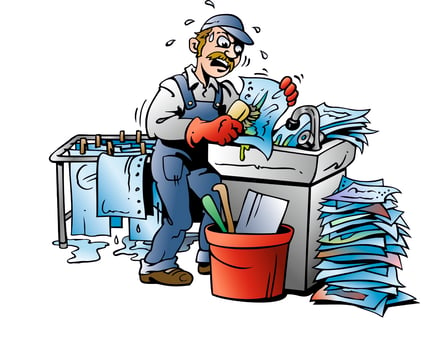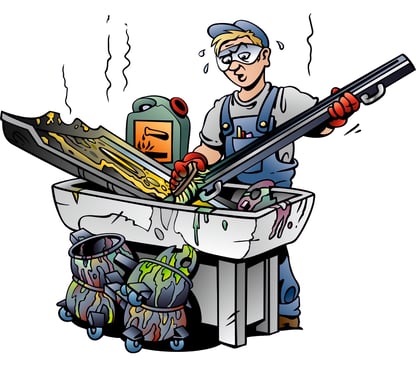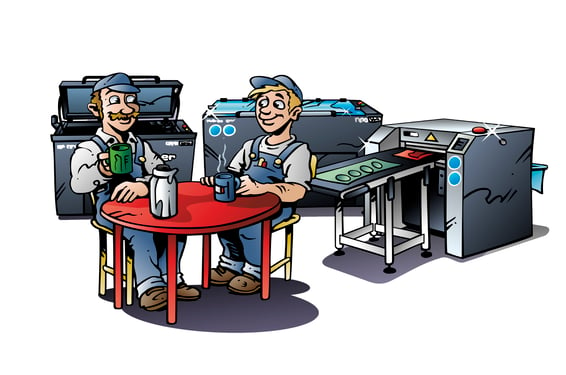Recently we revisited our ad campaigns of yore, dating back over 20 years. Something stuck out, and it was not the hand-drawn cartoons of exasperated press workers in overalls. It was that our core message has been the same for the entire existence of Flexo Wash.
That core message:
Automation of cleaning processes will increase your production.
With that message always carries a laundry list of benefits:
- Better print results
- Less downtime
- Cleaner parts
- Better for your anilox rolls, plates, sleeves and press parts
- Faster turnaround
- Increased production due to less downtime
- Safer and more environmentally friendly
- Cost-effective and definite Return on Investment
Moving Away From Manual Cleaning
The movement away from manual cleaning has been happening for decades. This cartoon captures the mess and stress of manual cleaning on a pressroom employee.

Manual cleaning is an exhausting, seemingly infinite process, where nothing is ever fully clean, fully dry and/or fully ready to get back out on the pressroom floor.

The Truth
Here is the truth that all businesses either know already or need to know about the future:
Whatever CAN be automated WILL be automated.
Makes sense, right? Workers are harder to come by but production needs to be maximized. Downtime is unacceptable and a huge liability. Businesses in the printing industry that formerly had full pressrooms of employees are a thing of the past. Automation is the future. Actually, automation is YOUR future.

This ad shows press workers enjoying a cup of coffee while their press parts, plates and anilox rolls are all being cleaned by fully-automatic Flexo Wash cleaning systems behind them.
Better than the alternative, right? Nobody can afford to waste the manpower, the valuable time or the poor output of manual cleaning anymore. The market is too competitive.
The advantage to automation is that it is constantly innovating. For converters, they can decide how much automation they want for their business, ranging from printing processes to cleaning processes. Depending on their points of pain and what level of production they need to achieve, the level of their automation is in their hands.
The takeaway: the message has remained the same because it will hold true as long as we are working in this industry. It has that much staying power and truth —we promise.
